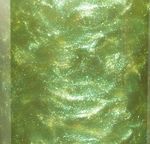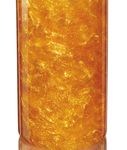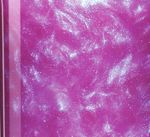Basic Principles for Formulating Cosmetic Pigments - Merck ...
←
→
Page content transcription
If your browser does not render page correctly, please read the page content below
Why are pearlescent pigments
used in rinse-off and gel products?
Pearlescent pigments will provide an irresistible In combination with dyes and/or other color Spice up your marketing concepts
shine of silver, gold or a rainbow of beautiful pigments, pearl luster pigments enable the New possible claims (e.g. ”silk & shine“)
colors. The use of substrate-based pearl creation of a multitude of colorful luster effects Attract customers’ attention
pigments in shampoo formulations creates with an impressive color shade and brilliance. Improve the product appearance and acceptance
iridescent effects which cannot be achieved Differentiation versus competitors at the point of sale
with conventional stearate pearling agents. Transparent packaging is highly recommended Brand recognition
These pigments are ideally incorporated into for those products. They will stand out in the Diversification of product range
transparent products. wide range of cosmetic rinse-off products. Individualization
2 3Use the most transparent
formulation possible
The less opacity the formulation has, the better is the visible effect, and
the lower is the concentration needed. Opaque formulations require higher
pigment levels, because light scattering reduces pearlescence.
Create your color
Use a colored (water/oil soluble dyes) or non-colored base formulation
and add a small amount of pearl pigments to add shine and highlights.
Pearl luster pigments can be combined with all types of organic water- or
oil-soluble dyes. By combining interference or color-travel pigments with
background colors a unique „two-color” effect is created, in which the
appearance varies with the angle of viewing.
Effect of particle size
Small particles create silky and satiny effects, opacify the mass and impart
richer appearance. Larger sized particles will provide high luster, sparkling
or glittering effects. The formulation will stay almost transparent.
Effect of concentration
Usage
Required attributes Base Recommended pigments concentration
Timiron® Silverwhite Pigments, Ronastar® Noble Sparks, Ronastar® Silver,
| Transparent | Timiron Interference Pigments or Ronastar Interference Pigments | 0.05 – 0.3 %
® ®
Rinse-off and gel products Timiron Silverwhite Pigments, Ronastar Noble Sparks, Ronastar® Silver,
® ®
with luxury pearl effects | Opaque | Timiron Interference Pigments or Ronastar Interference Pigments
® ®
| 0.5 – 1.0 %
Colored products with strong Transparent
silky to glittering luster | or opaque | Colorona Metallic Pigments
®
| 0.2 – 0.4 %
Transparent
Skin coloring gel products | or opaque | Colorona Earth-tone Pigments
®
| 0.5 – 5.0 %
Recommended pearl luster pigments
Appearance
Recommended pigments type (mass tone) Effects* Comment
Silverwhite Pigments | White | Silver luster; silky to glittering | Slight brightening of the bulk tone
Gold, copper, red, violet, blue or green
Interference Pigments | White | luster; silky to glittering | Slight brightening of the bulk tone
Color changing effects in combination
Xirona® Color Travel Pigments with TiO2 coating | White | with background colors | Slight brightening of the bulk tone
* Effect achieved depends upon particle size of pigment.
5Product Anti-settling agent (INCI name) Tradename (Manufacturer) Concentration
Keltrol – Various Grades
| Xanthan Gum | (Monsanto) | 0.7 – 1.0 %
Pearl pigments do not tend to agglomerate but disperse Thickagent LC
evenly. The pearl pigment should be added to the | Xanthan Gum (and) Hectorite (and) Cellulose Gum | (Les Colorants Wackherr) | 0.7 – 1.0 %
water (or oil) phase before the anti-settling agent is | Acrylates/C10-30 Alkyl Acrylate Crosspolymer | Carbopol ETD 2020 (Lubrizol) | 0.7 – 1.0 %
dispersed. To achieve an almost bubble-free formula- | Acrylates/Palmeth-25 Acrylate Copolymer | Synthalen W 2000 (3V) | 0.7 – 1.0 %
tion, stir with low agitation. Veegum HV (Vanderbilt) and
| Magnesium Aluminum Silicate and Hydroxypropylcellulose | Klucel G (Hercules) | 0.7 – 1.0 %
Stabilization of pearl Sodium Acrylate (and) Sodium Acryoyldimethyl Taurate
| (and) Isohexadecane (and) Polysorbate 80 | Simugel EG (Seppic) | 2.0 – 5.0 %
pigments in rinse-off Acrylates / Aminoacrylates / C10-30 Alkyl PEG-20
| Itaconate Copolymer
Structure Plus (National
| Starch & Chem. Ltd.) | 7.0 – 10.0 %
and gel products Carbopol Aqua SF-1 Polymer
| Acrylates Copolymer | (Lubrizol) | 5.0 %
In highly viscous systems (hair styling gels, after sun Shower Gel / Shampoo | Acrylates Crosspolymer | WorléeAqua Thix 100 (Worlée) | 2.0 – 10.0 %
gels, hydro gels) pearl luster pigments are stabilized | Silica | Aerosil (Evonik) | 1.0 – 4.0 %
within the gel base. Only in low viscous systems (shower
Oil Gel / Bath Oil | Dextrin Palmitate | Rheopearl KL (Ciba) | 2.0 – 10.0 %
gels, shampoos, and bath products) do pearl luster
Pearl pigments containing carmine, chromium oxide, chromium hydroxide or ferric ferrocyanide should not be used in rinse-off or gel products because of their stability
pigments need to be stabilized against sedimentation. problems in water-based systems. Pigments containing Fe3O4 face stability problems in acidic solutions and may react with phosphates.
An increase in viscosity alone will not prevent settling;
a thixotropic gel is needed. The listed thickeners build
a gel network which is compatible with many deter-
gent systems.
A pearl shimmer effect may be achieved by adding
a single silver pigment.
Attractive effects can be created by highlighting the
base color, e. g. green, with a green interference
pigment (e. g. Timiron® Splendid Green). The luster
of the interference color will underline the mass tone.
This effect cannot be obtained by using pearlizing
agents.
Two-tone and unusual effects can be created if the
base color (e. g. orange or brown) is combined with
a pigment of different interference color (e. g. gold).
This effect also cannot be achieved with pearlizing
agents.
Eye-catching effects can be achieved by using our
Xirona® Color Travel Pigments. They can be used
alone or in combination with light colored background
(water soluble dye). Only small amounts of pigment
(up from 0.05 % pigment concentration) are necessary
to result in stunning effects.
6Products are warranted to meet the specifications set forth on their label/pack-
aging and/or certificate of analysis at the time of shipment or for the expressly
stated duration. Merck provides information and advice on application technol-
ogies and relevant regulations based upon its current knowledge and opinion.
MERCK MAKES NO REPRESENTATION OR WARRANTY OF ANY KIND, EXPRESS
OR IMPLIED, INCLUDING MERCHANTABILITY OR FITNESS FOR A PARTICULAR
USE REGARDING OUR PRODUCTS, THEIR APPLICATION OR ANY INFORMATION
PROVIDED IN CONNECTION THEREWITH. Merck shall not in any event be liable
for incidental, consequential, indirect, exemplary or special damages of any kind
resulting from any use or failure of the products. Customer is responsible for and
must independently determine the suitability of Merck’s products for its products,
intended use and processes. The foregoing information and suggestions are also
provided without warranty of non-infringement as to intellectual property rights
of third parties and shall not be construed as any inducement to infringe the
rights of third parties. Customer shall be responsible for obtaining any applicable
third party intellectual property licenses. All sales are subject to Merck’s complete
Terms and Conditions of Sale. Prices are subject to change without notice. Merck
reserves the right to discontinue products without prior notice.
Merck, the vibrant M, Timiron®, Colorona®, Xirona® and Ronastar® are trade-
marks of Merck KGaA, Darmstadt, Germany. All other trademarks pertain to their
proprietors.
Merck KGaA Merck Ltd.
Performance Materials Performance Materials
Pigments & Functional Materials Pigments & Functional Materials
Decorative Materials Decorative Materials
Frankfurter Str. 250 ARCO Tower, 5F
64293 Darmstadt, Germany 8-1, Shimomeguro 1-chome Meguro-ku
Phone +49 (0) 6151 72-6899 Tokyo 153, Japan
merck4cosmetics.com Phone +81 3 5434-4711
E-Mail: cosmetic@merckgroup.com merck4cosmetics.com
E-Mail: merck_cos@merckgroup.com
EMD Performance Materials Corp. A subsidiary of Merck KGaA
Pigments & Functional Materials Darmstadt, Germany
Decorative Materials
One International Plaza Suite 300
W304116, August 2016
Philadelphia, PA 19113, USA
Phone +1 484-652-5600
emd4cosmetics.com
E-Mail: rona@emdgroup.com
A subsidiary of Merck KGaA
Darmstadt, Germany merck4cosmetics.comYou can also read



























































